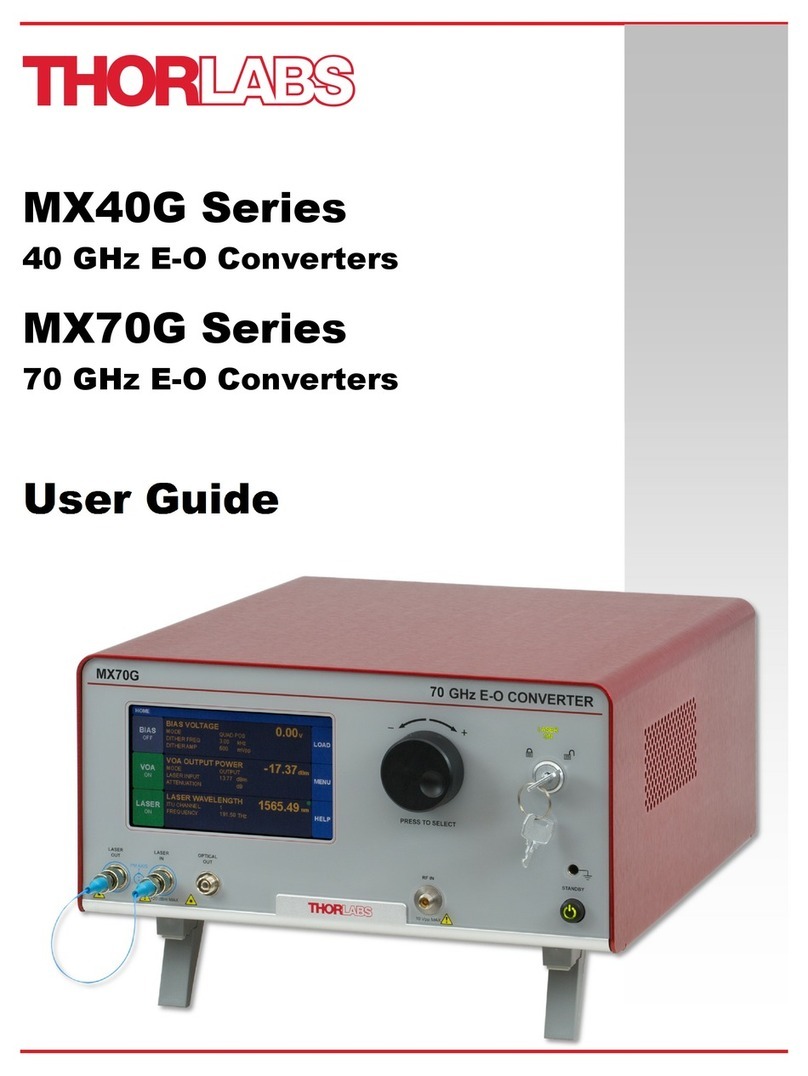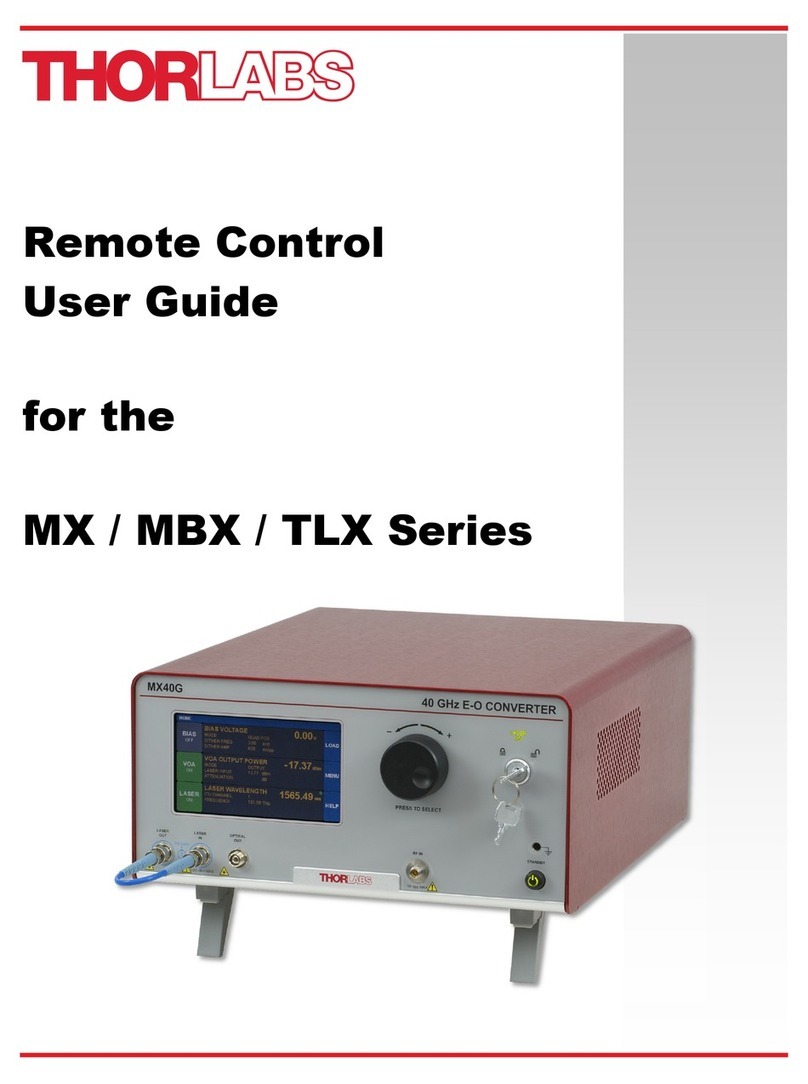MX110G Series of E-O Converters Chapter 1: Introduction
Rev. A, June 8, 2023 Page 1
Chapter 1 Introduction
General Information
Thorlabs' MX110G Series of Electrical to Optical (E-O) Converters offers a frequency response up to 110 GHz. Each
converter incorporates a telecommunication-grade lithium niobate (LiNbO3) modulator that is stabilized by a fully
automatic bias controller. Select an internal tunable laser source, fixed-wavelength laser source, or couple an
external laser, operating from 1525 nm to 1575 nm for the MX110G and 1260 nm to 1360 nm for the
MX110G-1310, to the PM FC/PC fiber optic connector on the input panel. The instrument is fully driven using the
intuitive graphical user interface (GUI) touchscreen, and the RS-232 connection on the back panel enables remote
control of many instrument functions. Please contact Thorlabs Technical Support for up-to-date information on
the firmware revisions and control functions available.
These converters are particularly well suited for use as accessories that provide optical test capability for an all-
electrical vector network analyzer (VNA). This pairing enables an optical to electrical (O-E) device under test (DUT)
to be accurately measured. To support this use, each E-O converter ships with an *.s2p file characterizing its
frequency response. This frequency response can be used to de-embed the response of the O-E DUT by separating
the E-O converter’s response from the overall measurement response. Please see Section 4.2 for more
information.
This instrument can be controlled in two ways. The simplest method is directly via the built-in graphical user
interface (GUI) and touchscreen. The instrument can also be operated remotely via the RS-232 or USB ports on
the back panel. Remote control is enabled using simple SCPI-type serial commands from a PC. See the remote-
control user guide (RCUG), which can be downloaded from https://www.thorlabs.com/manuals.cfm.
The most recent firmware and remote-control software tool can be downloaded by visiting
https://www.thorlabs.com/software_pages/viewsoftwarepage.cfm?code=MX. Thorlabs’ technical support can
provide up-to-date information on available firmware revisions and control functions.
Parts List
Inspect the shipping container for damage. If the shipping container seems to be damaged, retain it until all
contents have been inspected and the unit has been mechanically and electrically tested. Verify receipt of the
following items:
•E-O Converter Main Unit
•Power Cord According to Local Power Supply
•PM Loopback Fiber Optical Cable
•Interlock Keys
•2.5 mm Interlock Pin (in Back Panel)
•1.25 A 250 VAC Fuse
•USB Type A to Type B Cable, 6' Long
•USB Storage Device with *.s2p File Characterizing Instrument





























